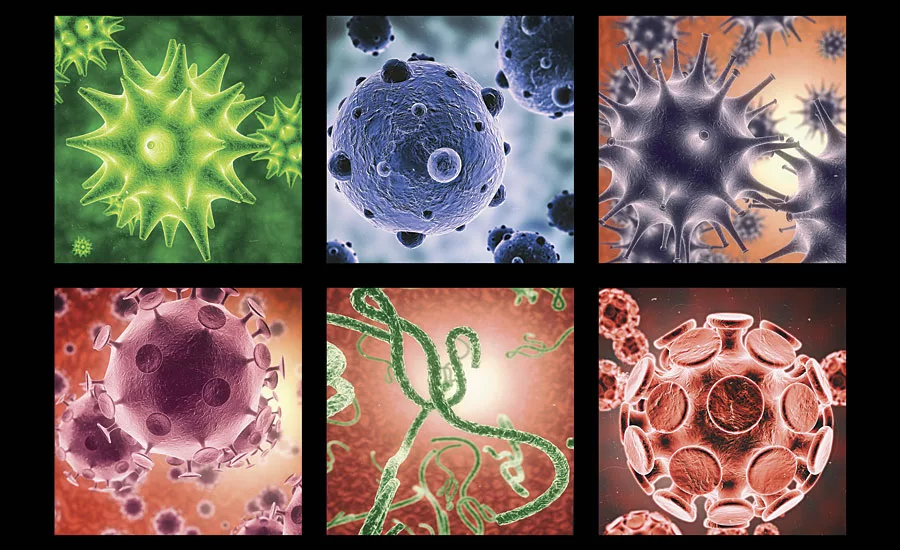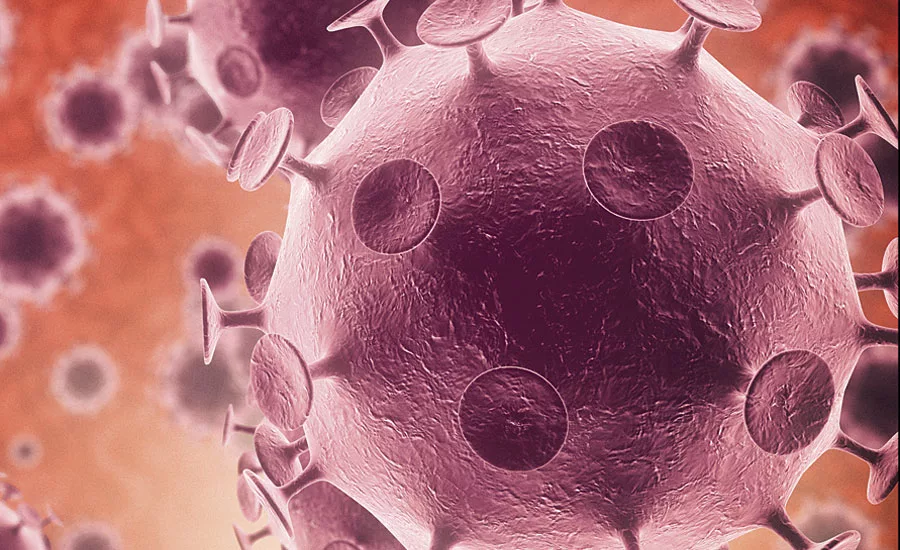Life Without Microbial Control


Micro-organisms, also known as microbes, play a vital role in our everyday lives; in fact they are so important that life as we know it would be impossible without them. Microscopic organisms are essential to maintaining life on earth, fixing gases, and breaking down dead plant and animal matter into simpler substances that are used at the bottom of the food chain. Over the centuries, humans have developed methods by which to exploit these microbes to benefit our species, for example, in the production of medicine and food.
Despite the benefits of some microbes, many are actually extremely harmful and need to be controlled in order to reduce disease, protect resources and prevent the destruction of our environment. If left untreated, certain microbes have the capability to attack our immune system and in turn, make us ill. Microbes are well-known to cause infectious diseases such as influenza and measles. However, microbes have been found to affect the human body through an even broader range of illnesses, as there is strong evidence showing that they may also contribute to some forms of cancer and coronary heart disease.1
The importance of microbial control cannot be overstated, yet very few people are aware of the benefits microbial control methods have throughout society. The development of antimicrobials in materials such as paint and various types of coatings have been paramount to sustainability efforts. Protecting ourselves and various essential materials and products from microbes is not a new practice - in fact we have been doing it for hundreds of years. Simply washing your hands to remove unwanted germs or applying paint to your walls are both very effective forms of microbial control that largely go unnoticed.
Antimicrobial control technologies cannot be seen or smelled; they are, however, omnipresent. Microbial control technology has become a sophisticated science that is essential to our everyday lives but is often completely overlooked! It is easy to forget how different the world was without microbial control technologies. A mere 150 years ago our environment was considerably more hostile than it is today. It is worthwhile reflecting upon our present situation from time to time and asking ourselves, what would today’s world look like without microbial control?
Healthcare
Arguably the most important application today for microbial control technologies lies within healthcare. Fighting bacteria, viruses and fungi with antimicrobial technology has become so commonplace that it rarely gets the recognition it deserves. How would the health of the human race fare without the control methods we have in place today?
Well-known illnesses such as Ebola virus and food poisoning are caused by harmful microbes. Prior to the 20th century, food poisoning and other forms of gastric illness were a common occurrence. Without microbial control technologies in place today, society would undoubtedly face frequent outbreaks of foodborne illnesses. Modern farming operations - especially the larger ones - are able to employ strict hygiene standards as a result of microbial control technologies. The techniques employed by these farmers keep our food pathogen free and the population at large healthy.
Additionally, antimicrobial technologies are paramount to the efficacy of disinfectant hand wash. Without this technology, the instances of healthcare-associated infections would increase rapidly, resulting in the outbreak of many communicable diseases such as the flu, Ebola virus, and the Norovirus. Enveloped viruses like Ebola are known to be susceptible to a broad range of hospital disinfectants used to sanitize hard, nonporous surfaces. This is an example of why surface hygiene is so critical. Recent developments in microbial control technology include substances that remain active for up to six hours, disinfectants that use advanced technologies to create compounds that have lower toxicity because of significantly lower concentrations of active ingredients, and disinfectants that last for up to 90 days on all surfaces, providing long-lasting protection from disease and infection. These advancements in technology are our frontline defense against the spread of infectious diseases.
Water Treatment
Water is one of the most valuable and precious resources today in regions across the world. Without microbial control technologies, water would be even scarcer than it already is. Antimicrobials play an essential role in the provision of safe drinking water around the globe. According to the United Nations (UN), 1.6 billion people, or almost one quarter of the world’s population, face water shortages. Access to clean water has therefore been identified as one of the UN’s sustainable development goals. In Europe, the European Commission plans to draft a new guidance on water re-use as part of its Circular Economy Action Plan. Meanwhile in the United States, several states have developed action plans to address water shortages. Microbial control can provide a central solution to this challenge, as it helps keep clean the storage tanks, pipes and filters through which the water flows. If microbes were not eliminated with biocides, corrosion, scale deposits and slime formation would lead to millions of cubic meters of contaminated water.
Antimicrobials play a dual role when it comes to the treatment of water. They allow for access to clean drinking water, but also facilitate the reuse and treatment of water in industrial settings that would otherwise cause serious operational problems. The water that recirculates in cooling systems can often become contaminated with bacteria, algae, fungi and protozoa that lead to the formation of biofilms – often referred to as slime. If untreated, slime can lead to operational inefficiencies, microbial-induced corrosion (MIC) and can potentially host harmful micro-organisms. Cooling water treatment technologies allow for the control of fouling and maintain system integrity. Without the technologies that inhibit microbial growth, the operating conditions found in typical systems, such as temperature, pH, sunlight, aeration and nutrient level in makeup water, would be compromised.
Construction
Microbial control is of vital importance to the construction industry and has a wide range of applications. Construction products are particularly susceptible to spoilage from mold, mildew, fungi, algae and other organisms. In addition to reducing the life of construction products, the growth of harmful organisms can have serious health risks for consumers in close contact. Construction products need to be protected from microbial spoilage during manufacturing, shipping and storage. From concrete admixtures to specialty adhesives, it is essential to protect the product against bacteria and fungi, and to ensure that it reaches the customer without contamination. Biocides are used in a wide range of construction products to prevent such defacement from mold, to protect the product from spoilage in the container and to help prevent contamination during manufacturing.
Industrial and Consumer Products
Microbial control is especially relevant when it comes to the maintenance and performance of both industrial and consumer products. The efficacy of antimicrobials can clearly be seen in paints and coatings. Liquid bases used in latex paints can become a breeding ground for microorganisms. This can compromise the quality of the paint, leading to loss of viscosity, poor stability, gas formation, discoloration and foul odors. Biocides are used to inhibit such bacterial and fungal growth and help keep paints stable and preserved. Without microbial control products, paints would completely break down during storage and would lose all viscosity, texture and adhesion ability.2 As a result of modern antimicrobial technology, paint can now be stored for several years, and the finished coatings they produce will also last much longer. Longevity is particularly important because changes to our climate and the greater use of insulation materials in our homes have made it much easier for microorganisms to grow on the interior walls of our houses. Thanks to microbial control, buildings last longer; paints, adhesives and sealants, plastic and wood are de facto protected from the damaging effects of mold, mildew, fungi, algae and other organisms. In the context of wood, this is an environmentally important and effective method to reduce deforestation and preserve the natural environment.
Sustainability
The impact microbial control has on sustainability is broad and significant. Microbes have a negative effect on many things, such as the durability and efficiency of products. Without the microbial control technologies that exist today, energy consumption and waste output would be significantly higher.
Antimicrobial technologies make paints, pipes, adhesives and sealants last longer, preventing deterioration and saving valuable resources, including water. This technology can be applied in a wide range of industrial settings, from controlling corrosion and enhancing the service life of machinery to safeguarding fuel production and fuel efficiency. By helping to improve the quality of products and industrial processes, antimicrobials make treated items last longer and work more efficiently. The growth of bacteria on metal equipment is an especially big concern in oil and gas operations, where a lot of the pipes are in difficult-to-reach areas, making repairs and replacement very difficult. As a result, biocides are used to control the growth of microbes in pipes through which fluids are transported, which in turn prevents the formation of biofilm and subsequent MIC. This method of microbial control significantly reduces the need to replace machinery, and thus help us preserve the earth’s natural resources.
Microbial control is especially relevant for the shipping industry. Antifouling coatings are used to prevent the translocation of marine species from one continent to another. Without the antimicrobials present in the coatings, native marine species would be at risk and the biodiversity of marine habitats would be jeopardized. The implications of microbial control in shipping are far reaching. Shipping is one of the safest and most-trusted forms of cargo transport available. But if a ship’s hull is left untreated, it collects marine organisms such as barnacles, mussels and algae that create drag as the ship travels through water. This can increase fuel consumption by more than 40%, not only adding massive costs but also increasing the use of valuable fuel resources. Microbial control technology is a key component of the antifouling paints that are used to keep ships’ hulls clean and free from these unwanted marine organisms. Without these technologies the shipping industry would face huge costs to efficiency and use of resources.
Microbial control technologies contribute greatly to the fight against food waste and hunger in the world today. Antimicrobials can help combat micro-organism contamination at food production facilities. This includes using technology to clean irrigation water used on crops, and to clean food containers and packaging. With almost one third of the food produced today going to waste, antimicrobials are again paving the way towards a better future.
Conclusion
These technologies have truly become commonplace throughout society. Despite microbial control solutions being a small addition in a lengthy production process, their contribution is critical and will continue to play a central role in human development.
The Microbial Control Executive Council (MCEC) is an initiative of six of the world’s leading microbial control companies aiming to promote the benefits of microbial control and raise awareness of the many, and largely unnoticed, applications of microbial control technologies. Furthermore, the MCEC seeks to promote the responsible use of antimicrobial technologies to benefit societies across the globe. Committed to the betterment of public health through the advancement of sustainable microbial control technologies, members of the MCEC wish to inform about the sustainable use of these technologies and the critical role they play in our society. MCEC seeks to promote the benefits and solutions of microbial-control technologies by informing and interacting with various audiences, while facing challenges and seizing opportunities.
For more information about the MCEC, we invite you to follow us on LinkedIn, visit our website at www.microbial-control.com and subscribe to our newsletter.
References
1 http://www.microbiologyonline.org.uk/about-microbiology/microbes-and-the-human-body/microbes-and-disease
2 http://www.americanchemistry.com/ProductsTechnology/Biocides/Benefits-of-Antimicrobial-Pesticides-April-2010.pdf
Looking for a reprint of this article?
From high-res PDFs to custom plaques, order your copy today!







